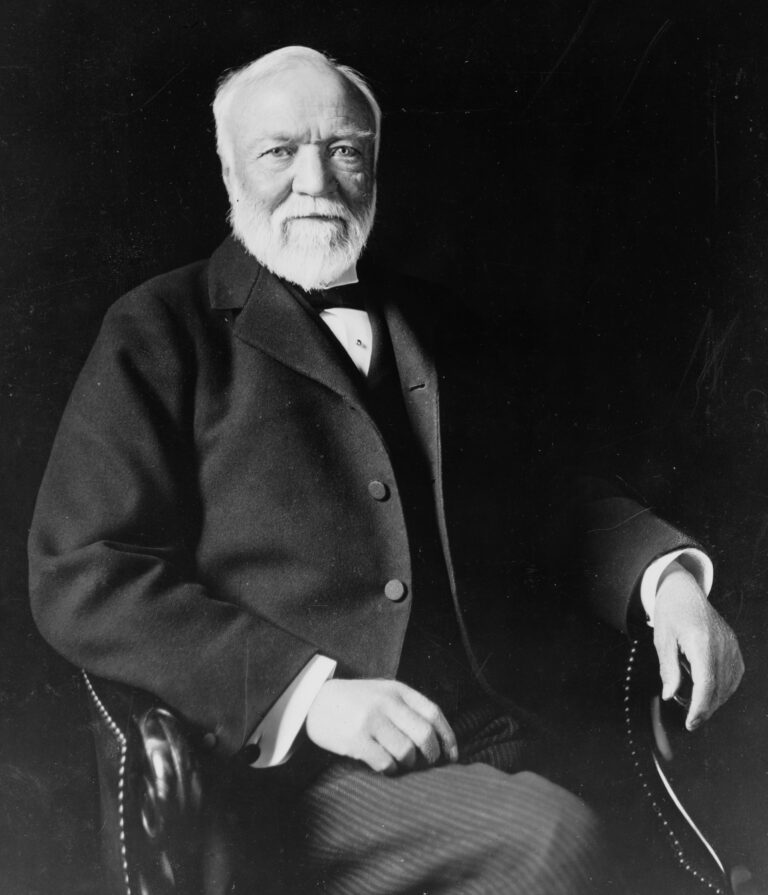Develop Leaders, Not Followers: The Power of Leadership Development
Investing in People: The Key to Sustainable Success
Leadership development is a crucial aspect of any successful organization. Without effective leaders, teams and companies can flounder, fail to meet goals, and even falter completely. Leaders who recognize the importance of investing in their people and developing other leaders are more likely to create a culture of success and growth within their organization. The goal of leadership development is not just to create followers, but rather to create a network of skilled, confident, and capable leaders who can work together to achieve common goals.
The thesis statement, “Leaders take the time to invest in people – leaders develop leaders, not followers,” emphasizes the importance of nurturing and cultivating leadership potential within an organization. This statement suggests that true leadership involves a focus on creating leaders at all levels, rather than simply creating a hierarchy of followers. Effective leadership development requires a deep commitment to identifying and developing leadership talent within an organization, regardless of job title or level of experience.
Leadership development is a strategic investment that can help organizations grow and succeed in the long term. When leaders invest in developing other leaders, they create a culture of growth, learning, and innovation. By cultivating leaders who can inspire and motivate others, organizations can create a sustainable culture of success, built on a foundation of collaboration, trust, and accountability.
Investing in leadership development also provides organizations with a competitive edge in a rapidly changing business landscape. In today’s complex and dynamic environment, organizations must be able to adapt quickly and effectively to stay ahead of the competition. Developing a deep bench of skilled leaders who can adapt to changing circumstances and lead their teams through difficult times is essential for success.
Furthermore, effective leadership development can lead to improved employee retention and engagement. When employees feel that their organization is invested in their growth and development, they are more likely to feel valued and engaged in their work. This can lead to increased job satisfaction, greater commitment to the organization’s mission, and improved retention rates.
Leadership development is a critical aspect of organizational success. Leaders who invest in developing other leaders create a culture of growth, innovation, and collaboration that can help their organization succeed in the long term. The thesis statement, “Leaders take the time to invest in people – leaders develop leaders, not followers,” emphasizes the importance of nurturing leadership talent at all levels, and creating a culture of leadership development throughout the organization. In the following sections, we will explore the benefits of leadership development, as well as strategies for developing other leaders and overcoming challenges along the way.
The Difference between a Leader and a Follower
Leadership is a complex concept that can be difficult to define. At its core, leadership involves influencing others to achieve a common goal. However, the difference between a leader and a follower goes beyond just influence. To truly understand the importance of leadership development, it is crucial to define what makes a leader different from a follower.
Defining a leader
A leader is someone who has the ability to inspire and motivate others to achieve a common goal. Leaders have a vision for the future and are able to communicate that vision in a way that inspires others to join them on the journey. They have strong communication skills, emotional intelligence, and the ability to build and maintain relationships. Leaders are often willing to take risks and make difficult decisions, even when the outcome is uncertain. They are accountable for their actions and are willing to take responsibility when things go wrong.
Defining a follower
A follower is someone who supports the vision and goals of a leader. Followers may be motivated by a desire to learn from the leader or to achieve personal goals that align with the leader’s vision. Followers are often willing to work hard and contribute to the success of the team or organization, but they may not have the same level of influence or decision-making power as a leader.
Explaining the difference between a leader and a follower
The main difference between a leader and a follower is the ability to influence others. While both leaders and followers may be committed to achieving a common goal, leaders have the ability to inspire and motivate others to take action towards that goal. Leaders are able to create a sense of shared purpose and direction, and are often seen as role models by their followers.
Another key difference between leaders and followers is their level of responsibility. Leaders are accountable for the success or failure of their team or organization, and are expected to make difficult decisions and take responsibility when things go wrong. Followers, on the other hand, may have less responsibility for the overall success of the team or organization, and may not have the same level of decision-making power.
Effective leadership development requires an understanding of the difference between a leader and a follower, and a focus on developing leadership skills at all levels of the organization. By developing leaders who have the ability to inspire and motivate others, organizations can create a culture of success and growth. Additionally, by empowering followers to take on leadership roles and responsibilities, organizations can create a more collaborative and inclusive environment where everyone has the opportunity to contribute to the success of the team or organization.
The Importance of Leadership Development
Leadership development is not only important for the growth and success of an organization but also for the personal and professional development of individuals within the organization. In this section, we will explore the benefits of leadership development, the importance of investing in people, and why leaders should develop other leaders.
Benefits of leadership development
There are numerous benefits of leadership development for both individuals and organizations. Firstly, leadership development can lead to improved performance and productivity. When leaders have the skills and confidence to lead their teams effectively, they are better equipped to identify and address challenges and to inspire and motivate their team members. This can result in improved performance, productivity, and outcomes.
Leadership development can also lead to improved employee engagement and retention. When leaders invest in developing their team members, it sends a clear message that they are valued and that their growth and development are important. This can lead to increased job satisfaction, a greater sense of loyalty to the organization, and improved retention rates.
Leadership development can also lead to improved innovation and creativity within an organization. When leaders have the skills and confidence to think critically and to challenge the status quo, they are more likely to identify new opportunities and to develop innovative solutions to problems.
Investing in people
Investing in people is one of the most important things that leaders can do to create a culture of success within an organization. When leaders invest in developing their team members, it not only benefits the individual but also the organization as a whole. By providing opportunities for growth and development, leaders can create a more engaged, motivated, and committed workforce.
Investing in people also sends a message that the organization is committed to the long-term success of its employees. This can lead to greater loyalty and a stronger sense of purpose among team members. When employees feel that they are valued and that their growth and development are important, they are more likely to go above and beyond to contribute to the success of the organization.
Why leaders should develop other leaders
Developing other leaders is an important aspect of effective leadership development. By developing other leaders, leaders can create a culture of growth, innovation, and collaboration within their organization. When leaders have the skills and confidence to lead effectively, they are better equipped to inspire and motivate their team members to achieve their goals.
Developing other leaders also creates a pipeline of talent within the organization. By identifying and developing leadership potential at all levels, leaders can ensure that the organization has a deep bench of skilled and capable leaders who can step into leadership roles as needed.
Finally, developing other leaders can help to create a more inclusive and diverse organization. By providing opportunities for growth and development to all team members, leaders can ensure that everyone has the opportunity to contribute to the success of the organization. This can lead to a more collaborative and inclusive culture, where everyone has a voice and everyone is valued.
Leadership development is essential for the growth and success of individuals and organizations. Investing in people and developing other leaders can lead to improved performance, engagement, retention, innovation, and creativity within the organization. By creating a culture of growth, innovation, and collaboration, leaders can ensure the long-term success of their organization and its people.
How Leaders Can Develop Other Leaders
Developing other leaders is a critical aspect of effective leadership development. In this section, we will explore some strategies that leaders can use to develop other leaders, including coaching and mentoring, creating a culture of growth and development, providing opportunities for leadership roles, encouraging and recognizing leadership potential, and teaching leadership skills.
Coaching and mentoring
Coaching and mentoring are essential strategies for developing other leaders. Leaders who take the time to coach and mentor their team members can help them to develop the skills, knowledge, and confidence they need to be effective leaders. Coaching and mentoring can also help to build stronger relationships between leaders and their team members, and can help to create a culture of growth and development within the organization.
Effective coaching and mentoring involves setting clear goals and expectations, providing constructive feedback and guidance, and helping team members to identify and address their strengths and weaknesses. It also involves creating a safe and supportive environment where team members feel comfortable taking risks and trying new things.
Creating a culture of growth and development
Creating a culture of growth and development is another important strategy for developing other leaders. Leaders who prioritize growth and development within their organization create an environment where team members are encouraged to take ownership of their personal and professional development. This can help to create a more engaged and motivated workforce, as team members feel that their growth and development are valued and supported.
To create a culture of growth and development, leaders can provide opportunities for learning and development, encourage team members to seek out new challenges and experiences, and create a supportive environment where team members feel comfortable taking risks and trying new things.
Providing opportunities for leadership roles
Providing opportunities for leadership roles is another important strategy for developing other leaders. Leaders who provide opportunities for team members to take on leadership roles can help them to develop the skills and confidence they need to be effective leaders. This can also help to create a more diverse and inclusive organization, as team members from all backgrounds and levels have the opportunity to contribute to the success of the organization.
To provide opportunities for leadership roles, leaders can identify team members with leadership potential and provide them with opportunities to lead projects or initiatives. They can also create leadership development programs or provide training and support for team members who are interested in developing their leadership skills.
Encouraging and recognizing leadership potential
Encouraging and recognizing leadership potential is another important strategy for developing other leaders. Leaders who are able to identify and nurture leadership potential in their team members can help to create a pipeline of talent within the organization.
To encourage and recognize leadership potential, leaders can provide feedback and guidance to team members, help them to identify their strengths and weaknesses, and provide opportunities for growth and development. Leaders can also recognize and reward team members who demonstrate leadership potential, which can help to build confidence and motivation.
Teaching leadership skills
Finally, teaching leadership skills is an essential strategy for developing other leaders. Leaders who are able to teach leadership skills can help to build a strong foundation of leadership knowledge and expertise within their organization.
To teach leadership skills, leaders can provide training and support for team members, create leadership development programs, and provide opportunities for team members to practice and apply their skills. Leaders can also model effective leadership behaviors and provide feedback and guidance to team members as they develop their skills.
Developing other leaders is an essential aspect of effective leadership development. Leaders can use strategies such as coaching and mentoring, creating a culture of growth and development, providing opportunities for leadership roles, encouraging and recognizing leadership potential, and teaching leadership skills to develop other leaders within their organization. By investing in their people and creating a culture of leadership development, leaders can help to create a more engaged, motivated, and effective workforce, and ensure the long-term success of their organization.
Case Studies of Successful Leadership Development
Real-world examples of successful leadership development can provide valuable insights into effective strategies and best practices. In this section, we will explore three case studies of successful leadership development programs: Southwest Airlines, IBM, and GE.
Example 1: Southwest Airlines
Southwest Airlines is a well-known example of a company that has successfully developed leaders at all levels of the organization. Southwest’s leadership development program, called Leadership at Southwest (LAS), is designed to develop the company’s next generation of leaders. The program focuses on developing leadership skills, promoting collaboration and innovation, and creating a culture of learning and development.
One of the keys to the success of the LAS program is its focus on providing opportunities for leadership development at all levels of the organization. The program is open to all employees, from entry-level positions to senior leadership roles. This allows the company to identify and nurture leadership potential throughout the organization, and to create a pipeline of talent for future leadership roles.
Another key aspect of the LAS program is its emphasis on hands-on learning and development. Participants in the program are given the opportunity to work on real-world projects and initiatives, allowing them to develop practical leadership skills and gain experience in leadership roles.
Example 2: IBM
IBM is another company that has a strong focus on leadership development. IBM’s leadership development program, called the IBM Leadership Academy, is designed to develop leaders who can drive innovation, growth, and transformation within the company.
The IBM Leadership Academy uses a variety of development methods, including online learning, workshops, and coaching and mentoring. The program is designed to be flexible and customizable, allowing employees to choose the development methods that work best for them.
One of the key strengths of the IBM Leadership Academy is its focus on creating a culture of continuous learning and development. The program is designed to encourage employees to take ownership of their own development, and to seek out opportunities to learn and grow. This helps to create a culture of innovation and collaboration, where employees are encouraged to share their knowledge and expertise with others.
Example 3: GE
General Electric (GE) is another company that has a strong track record of leadership development. GE’s leadership development program, called the GE Leadership Development Program (LDP), is designed to develop leaders who can drive growth and innovation within the company.
The GE LDP is a highly structured program that includes classroom training, on-the-job learning, and mentoring and coaching. The program is designed to be rigorous and challenging, with a focus on developing leaders who can excel in a fast-paced and dynamic business environment.
One of the key strengths of the GE LDP is its emphasis on leadership accountability. The program is designed to help participants develop a deep understanding of their own strengths and weaknesses as leaders, and to hold themselves accountable for their own development. This helps to create a culture of ownership and responsibility, where leaders are empowered to take ownership of their own growth and development.
These case studies demonstrate the importance of leadership development in creating a culture of growth, innovation, and collaboration within an organization. By providing opportunities for leadership development at all levels of the organization, creating a culture of continuous learning and development, and emphasizing leadership accountability, companies like Southwest Airlines, IBM, and GE have been able to develop a deep bench of skilled and capable leaders who can drive their organizations to success.
Challenges in Developing Leaders
Developing leaders is not without its challenges. In this section, we will explore some of the common challenges that organizations face when developing leaders, including time constraints, resistance to change, and identifying potential leaders.
Time constraints
One of the biggest challenges in developing leaders is time. Developing leaders takes time, and in today’s fast-paced business environment, time is often in short supply. Leaders may feel that they simply do not have the time to invest in developing their team members, especially when they are already stretched thin with other responsibilities.
To overcome this challenge, organizations need to prioritize leadership development and make it a core part of their culture. This may involve allocating resources specifically for leadership development, such as time, budget, and personnel. Leaders can also find ways to integrate leadership development into their day-to-day work, such as by incorporating coaching and mentoring into their regular interactions with team members.
Resistance to change
Another common challenge in developing leaders is resistance to change. Many people are resistant to change, and may be hesitant to adopt new leadership styles or approaches. This can make it difficult to implement new leadership development initiatives, or to encourage team members to take on new leadership roles.
To overcome resistance to change, organizations need to communicate the benefits of leadership development and create a compelling vision for the future. Leaders can also help to overcome resistance to change by providing support and guidance to team members, and by creating a safe and supportive environment where team members feel comfortable taking risks and trying new things.
Identifying potential leaders
Identifying potential leaders is another common challenge in leadership development. It can be difficult to identify team members who have the potential to be effective leaders, especially when those team members may not have had the opportunity to demonstrate their leadership skills.
To overcome this challenge, organizations can use a variety of methods to identify potential leaders, including performance reviews, assessments, and feedback from colleagues and supervisors. Leaders can also create opportunities for team members to take on leadership roles, such as by assigning leadership responsibilities on projects or initiatives.
Developing leaders is not without its challenges. Time constraints, resistance to change, and identifying potential leaders are just a few of the common challenges that organizations may face. By prioritizing leadership development, communicating the benefits of leadership development, and identifying potential leaders through a variety of methods, organizations can overcome these challenges and create a culture of growth, innovation, and collaboration.
Overcoming Challenges in Leadership Development
Overcoming challenges in leadership development requires a deliberate and strategic approach. In this section, we will explore some key strategies for overcoming challenges in leadership development, including prioritizing leadership development, communicating the benefits of leadership development, identifying potential leaders, and creating a culture of growth and development.
Prioritizing leadership development
One of the most important strategies for overcoming challenges in leadership development is to prioritize leadership development within the organization. This involves making leadership development a core part of the organization’s culture and investing resources such as time, budget, and personnel to ensure that it is successful.
To prioritize leadership development, organizations can develop a comprehensive leadership development plan that outlines goals, strategies, and tactics for developing leaders at all levels of the organization. The plan should be aligned with the organization’s mission, vision, and strategic goals and should be reviewed and updated regularly to ensure that it remains relevant and effective.
Communicating the benefits of leadership development
Communicating the benefits of leadership development is another important strategy for overcoming challenges in leadership development. It is essential to communicate the value of leadership development to team members, managers, and other stakeholders, so that they understand why it is important and how it can benefit the organization.
To communicate the benefits of leadership development, organizations can use a variety of methods, including presentations, workshops, and case studies. They can also use testimonials from current and former participants in leadership development programs to demonstrate the impact that it has had on their personal and professional growth.
Identifying potential leaders
Identifying potential leaders is another key challenge in leadership development. Organizations need to identify team members who have the potential to be effective leaders and provide them with the opportunities and resources they need to develop their leadership skills.
To identify potential leaders, organizations can use a variety of methods, including assessments, performance reviews, and feedback from colleagues and supervisors. They can also create opportunities for team members to take on leadership roles on projects or initiatives, and to participate in leadership development programs.
Creating a culture of growth and development
Finally, creating a culture of growth and development is an essential strategy for overcoming challenges in leadership development. By creating a culture that values growth, innovation, and collaboration, organizations can encourage team members to take ownership of their personal and professional development, and to seek out opportunities to develop their leadership skills.
To create a culture of growth and development, organizations can provide opportunities for learning and development, such as training, coaching, and mentoring. They can also encourage team members to seek out new challenges and experiences, and to share their knowledge and expertise with others.
Overcoming challenges in leadership development requires a strategic and deliberate approach. Prioritizing leadership development, communicating the benefits of leadership development, identifying potential leaders, and creating a culture of growth and development are just a few of the strategies that organizations can use to develop a deep bench of skilled and capable leaders who can drive their organizations to success.
Building a Culture of Growth: A Call to Action for Leaders
Leadership development is a critical aspect of building a successful and sustainable organization. Investing in people and developing other leaders can help to create a culture of growth, innovation, and collaboration, and can ensure the long-term success of the organization.
Throughout this article, we have explored the difference between a leader and a follower, the importance of leadership development, strategies for developing other leaders, case studies of successful leadership development, challenges in developing leaders, and strategies for overcoming those challenges.
It is clear that leaders who take the time to invest in people and develop other leaders are more likely to create successful and sustainable organizations. By prioritizing leadership development, communicating the benefits of leadership development, identifying potential leaders, and creating a culture of growth and development, leaders can create a pipeline of skilled and capable leaders who can drive their organizations to success.
In summary, the thesis statement of this article is that “Leaders take the time to invest in people – leaders develop leaders, not followers.” This statement is supported by the research and case studies presented throughout the article.
As a call to action, we urge leaders to invest in their people and develop other leaders within their organization. By doing so, they can help to create a more engaged, motivated, and effective workforce, and ensure the long-term success of their organization. By prioritizing leadership development, communicating the benefits of leadership development, identifying potential leaders, and creating a culture of growth and development, leaders can create a better future for themselves, their team members, and their organization.






